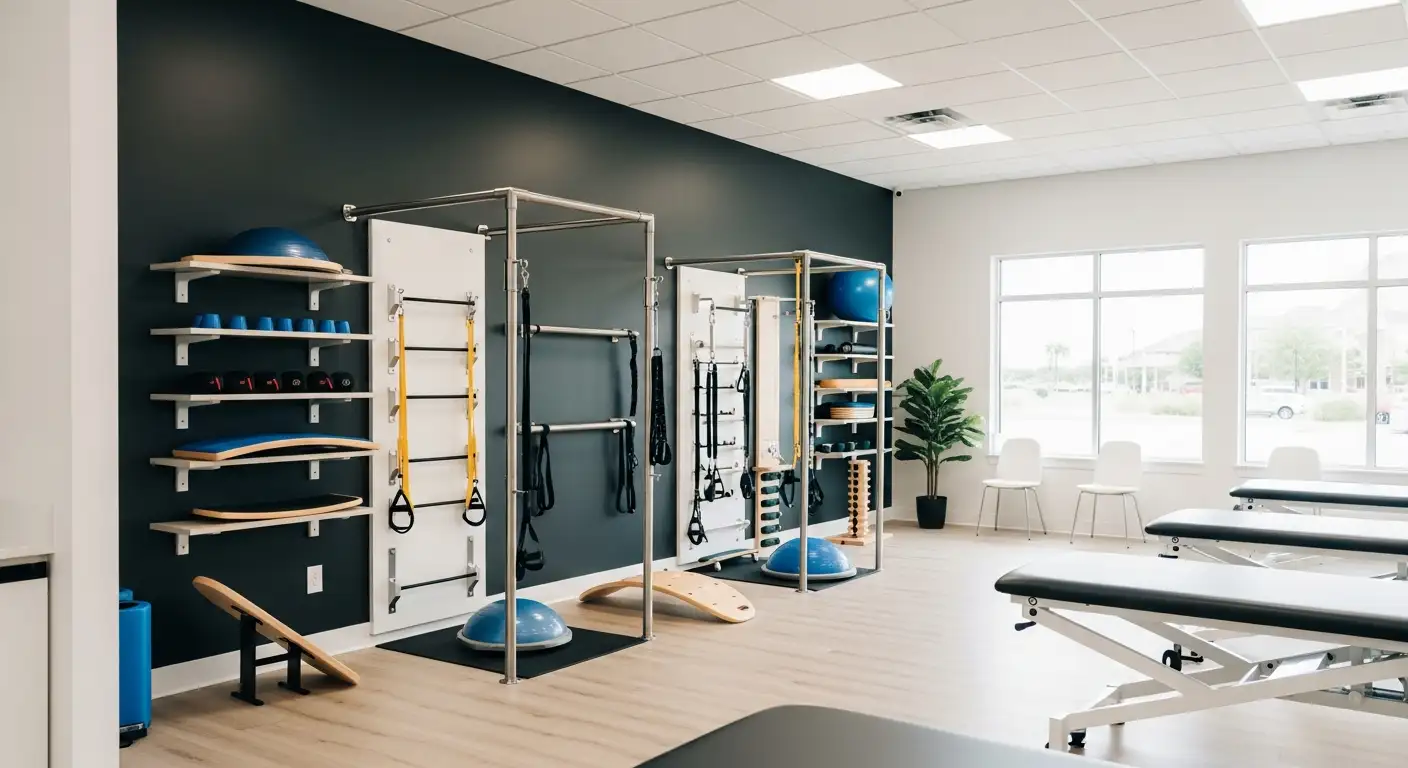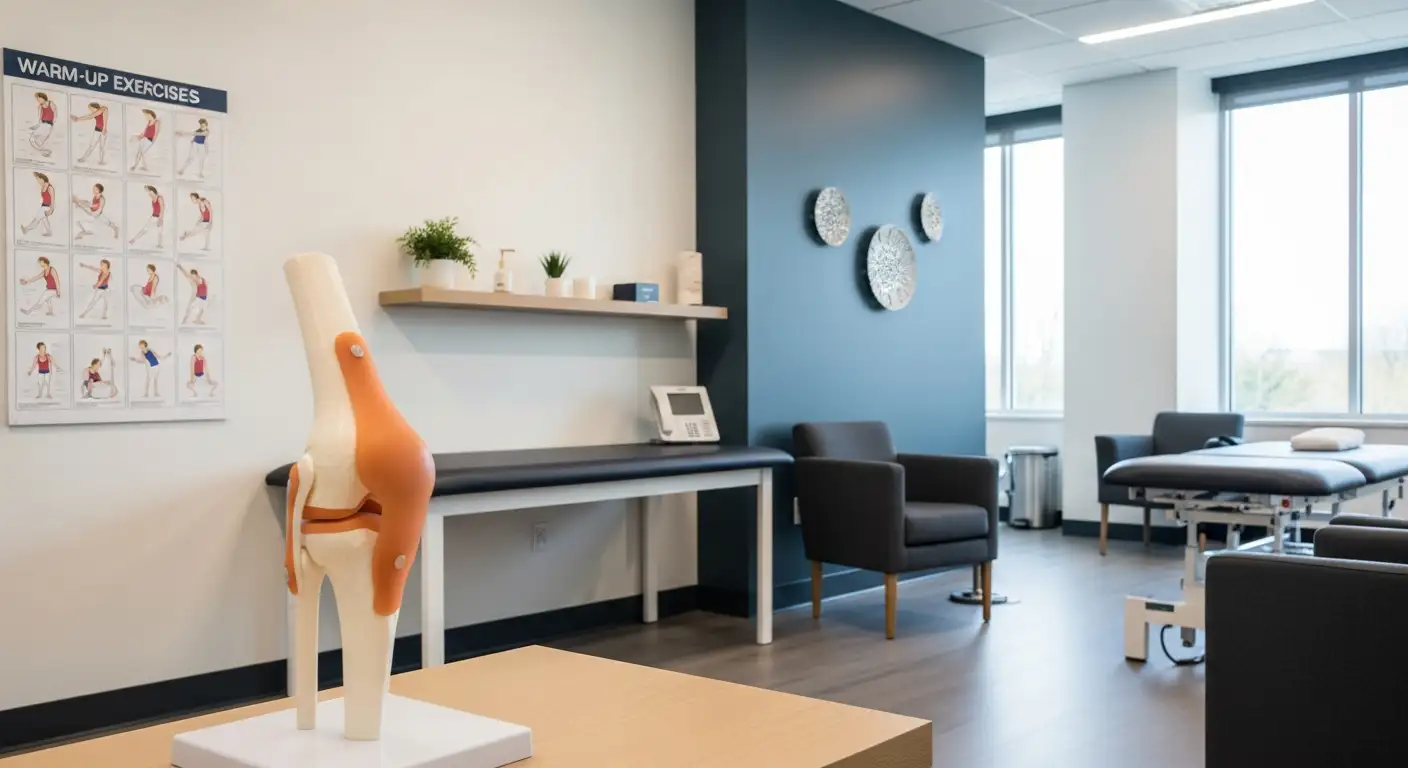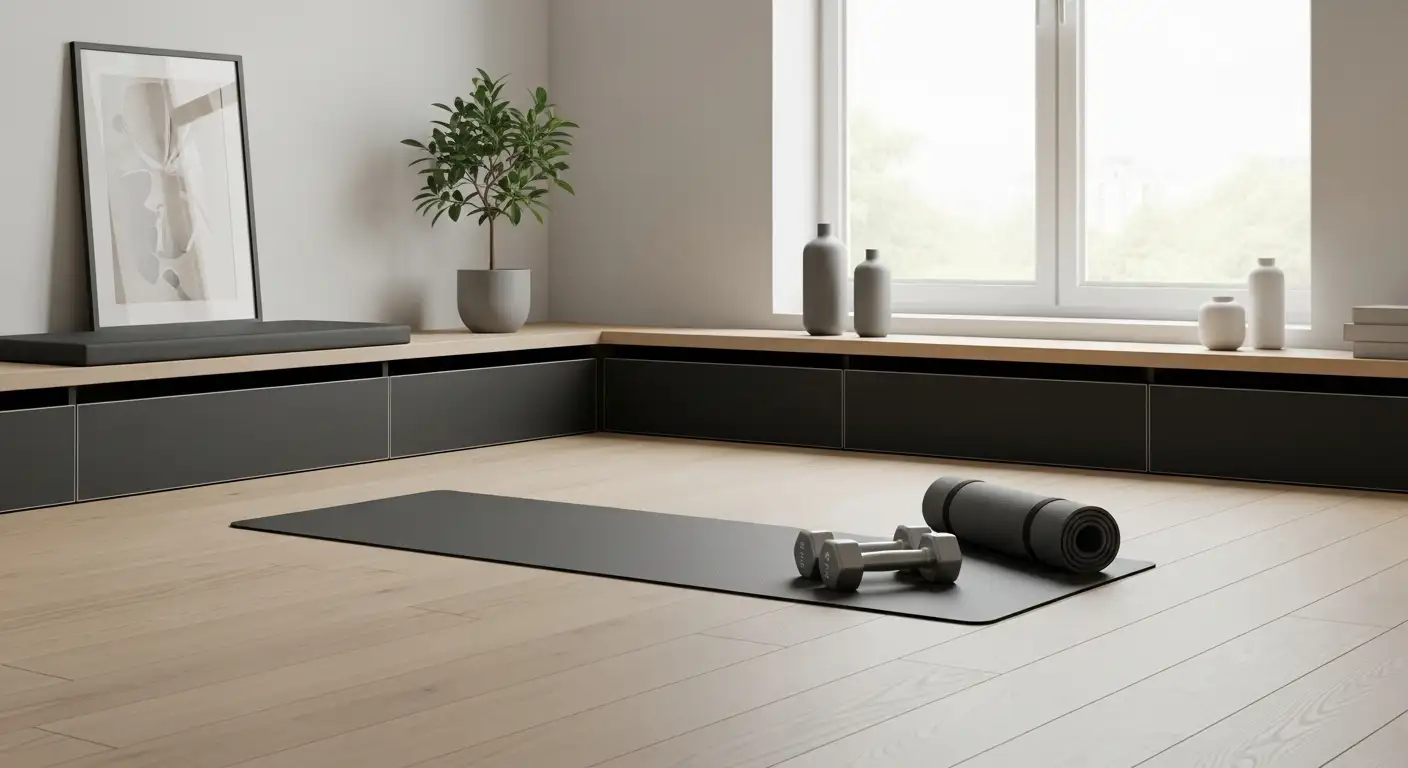Effective Exercises for Knee Osteoarthritis
When it comes to managing knee osteoarthritis, incorporating effective exercises into your routine can play a crucial role in improving joint function, reducing pain, and increasing overall mobility. In this section, we will explore three types of exercises that have shown promising results for individuals with knee osteoarthritis: strengthening exercises, aerobic exercises, and tai chi.

Strengthening Exercises
Strengthening exercises are an essential component of any exercise program for knee osteoarthritis. These exercises focus on building and maintaining the strength of the muscles around the knee joint, which can help improve stability and reduce pain. Some examples of strengthening exercises include:
- Leg Presses: This exercise involves pushing a weighted sled away from your body using your legs, targeting the quadriceps muscles at the front of the thigh. Leg presses can be performed on a leg press machine or with resistance bands.
- Squats: Squats are a compound exercise that engages multiple muscle groups, including the quadriceps, hamstrings, and glutes. They can be performed with or without weights, depending on your fitness level and comfort.
By incorporating these strengthening exercises into your routine, you can help improve the stability of your knee joint and alleviate some of the discomfort associated with knee osteoarthritis.
Aerobic Exercises
Aerobic exercises, also known as cardiovascular exercises, are beneficial for individuals with knee osteoarthritis. These exercises help improve joint function, reduce pain, and increase overall mobility. Some examples of low-impact aerobic exercises suitable for knee osteoarthritis include:
- Walking: Walking is a low-impact exercise that can be easily incorporated into your daily routine. It helps improve cardiovascular health and strengthens the muscles around the knee joint. Start with shorter distances and gradually increase the duration and intensity as tolerated.
- Swimming: Swimming is a non-weight bearing exercise that provides a full-body workout without putting stress on the joints. It helps improve cardiovascular fitness, strengthens muscles, and increases flexibility.
- Cycling: Cycling, whether on a stationary bike or outdoors, is a low-impact exercise that helps improve joint flexibility and strengthen the muscles around the knee joint. Start with a comfortable resistance and gradually increase as your fitness level improves.
By including these aerobic exercises in your routine, you can enhance joint function, reduce pain, and improve your overall well-being.
Tai Chi for Knee Osteoarthritis
Tai chi is a mind-body exercise that combines flowing movements, deep breathing, and mental focus. It has been found to improve balance, reduce pain, and improve overall physical function in people with knee osteoarthritis. The slow and controlled movements of tai chi help to improve joint flexibility, strengthen muscles, and enhance body awareness and balance.
Participating in tai chi classes or following instructional videos can provide guidance on the proper techniques and movements. It is important to consult with a healthcare professional before starting any new exercise program, including tai chi.
By incorporating tai chi into your routine, you can experience the benefits of improved balance, reduced pain, and overall physical well-being.
Incorporating these effective exercises into your routine can help manage knee osteoarthritis and improve your quality of life. Remember to consult with a healthcare professional before starting any new exercise program to ensure it is suitable for your individual needs and condition.
Range of Motion Exercises
Range of motion exercises are essential for individuals with knee osteoarthritis as they help maintain joint flexibility and reduce stiffness. This section will focus on two types of range of motion exercises: stretching exercises and yoga.
Stretching Exercises
Stretching exercises are beneficial for improving joint mobility and flexibility in individuals with knee osteoarthritis. These exercises target the muscles and tendons around the knee joint, helping to increase range of motion and reduce discomfort.
Here are a few stretching exercises that can be incorporated into a knee osteoarthritis exercise routine:
- Quadriceps Stretch: Stand near a wall or use a chair for balance. Bend one knee and bring your heel towards your buttocks, holding onto your ankle. Gently pull your heel closer to your buttocks until you feel a stretch in the front of your thigh. Hold for 30 seconds and repeat on the other side.
- Hamstring Stretch: Sit on the edge of a chair with one leg extended in front of you. Keeping your back straight, lean forward from your hips until you feel a gentle stretch in the back of your thigh. Hold for 30 seconds and repeat with the other leg.
- Calf Stretch: Stand facing a wall with your hands resting on the wall for support. Step one foot back, keeping your heel on the ground. Lean forward, bending your front knee, and press your back heel down until you feel a stretch in your calf muscle. Hold for 30 seconds and repeat on the other side.
Remember to perform these stretches gently and avoid bouncing or jerking movements. Stretching should be done gradually and should not cause pain. If you experience any discomfort, reduce the intensity of the stretch or consult with a healthcare professional.
Yoga for Knee Osteoarthritis
Yoga is another excellent option for individuals with knee osteoarthritis as it combines stretching, strengthening, and balance exercises. It promotes flexibility, improves joint function, and helps reduce stress and tension.
Some yoga poses that are particularly beneficial for knee osteoarthritis include:
- Child's Pose (Balasana): Kneel on the floor with your knees wide apart and big toes touching. Sit back on your heels and lower your torso between your thighs, extending your arms forward. Rest your forehead on the ground or a prop. Hold the pose for 30 seconds to 1 minute, focusing on deep breathing and relaxation.
- Tree Pose (Vrksasana): Stand tall with your feet hip-width apart. Shift your weight onto one leg and bend the opposite knee, placing the sole of your foot on the inner thigh of your standing leg. Find your balance and bring your hands together in a prayer position at your chest. Hold for 30 seconds to 1 minute and repeat with the other leg.
- Warrior II (Virabhadrasana II): Stand with your feet wide apart, turning your right foot out to the side and your left foot slightly inwards. Bend your right knee, keeping it in line with your ankle, and extend your arms out to the sides. Gaze over your right fingertips. Hold the pose for 30 seconds to 1 minute and repeat on the other side.
It's important to listen to your body and modify or skip any poses that cause discomfort or pain. If you are new to yoga or have severe knee osteoarthritis, consider taking a beginner's class or working with a qualified yoga instructor who can provide guidance and modifications tailored to your needs.
Range of motion exercises, including stretching and yoga, can play a significant role in maintaining joint flexibility and reducing stiffness in individuals with knee osteoarthritis. Incorporating these exercises into a regular exercise routine can help improve overall knee function and enhance your quality of life.
Low-Impact Exercises
For individuals with knee osteoarthritis, low-impact exercises are beneficial as they help improve joint function and reduce pain without putting excessive stress on the knees. Here are three effective low-impact exercises that can be incorporated into a fitness routine for knee osteoarthritis:
Swimming for Knee Osteoarthritis
Swimming is a highly recommended exercise for individuals with knee osteoarthritis. According to Medical News Today, swimming can improve joint mobility and strengthen the surrounding muscles while minimizing stress on the joints. The buoyancy of water reduces the impact on the knees, making it an ideal exercise for individuals experiencing pain or discomfort.
Swimming allows for a wide range of movements, engaging various muscle groups without putting excessive strain on the knee joints. It provides a low-impact cardiovascular workout, promoting overall fitness and helping to manage weight, which can further alleviate stress on the knees.
Water Aerobics
Water aerobics, also known as aqua aerobics, is another excellent low-impact exercise option for individuals with knee osteoarthritis. As mentioned by WebMD, the buoyancy of water reduces stress on the joints while providing resistance for muscle strengthening.
Water aerobics classes typically involve various exercises and movements performed in shallow water or using flotation devices. These exercises help improve joint flexibility, strengthen muscles, and enhance cardiovascular fitness. Additionally, the supportive nature of water can help individuals feel more comfortable and confident while exercising.
Elliptical Training
Elliptical training is a popular low-impact exercise option for individuals with knee osteoarthritis. It provides a cardiovascular workout while minimizing stress on the knees and other joints. According to UpToDate, low-impact aerobic exercises like elliptical training are recommended for individuals with knee osteoarthritis due to their joint-friendly nature.
Elliptical machines simulate walking or running motions without the impact associated with these activities. The smooth gliding motion helps maintain joint flexibility and strengthens the leg muscles. Adjustable resistance levels allow individuals to customize the intensity of their workout, making it suitable for different fitness levels.
When engaging in low-impact exercises, it's important to listen to your body and make adjustments as needed. Consultation with a healthcare professional is always recommended before starting any new exercise routine, especially for individuals with knee osteoarthritis. A personalized exercise plan can be developed based on an individual's specific needs, limitations, and goals.
By incorporating low-impact exercises like swimming, water aerobics, and elliptical training into a fitness routine, individuals with knee osteoarthritis can improve joint mobility, strengthen muscles, and manage their condition effectively. These exercises offer a balance between maintaining physical activity and minimizing stress on the knees, allowing individuals to reclaim an active and fulfilling life.
Walking for Knee Osteoarthritis
Walking is a simple and effective exercise for individuals with knee osteoarthritis. It offers numerous benefits, including improved joint flexibility, reduced pain, and maintenance of overall cardiovascular health. Walking is considered a low-impact aerobic exercise, making it a suitable option for individuals with knee osteoarthritis, as it minimizes stress on the joints.
Regular walking can help improve joint function, increase mobility, and enhance overall quality of life for individuals with knee osteoarthritis. Here are some key benefits of walking for knee osteoarthritis:
- Improved Joint Flexibility: Walking helps to keep the joints active and mobile, promoting flexibility and reducing stiffness. It also helps to lubricate the joints, which can alleviate discomfort.
- Reduced Pain: Walking can help reduce pain associated with knee osteoarthritis by strengthening the muscles around the knee joint and providing gentle movement to the affected area. It also stimulates the release of endorphins, natural pain-relieving chemicals in the body.
- Cardiovascular Health: Engaging in regular walking can contribute to maintaining overall cardiovascular health. It helps improve heart and lung function, increases circulation, and reduces the risk of cardiovascular diseases.
When starting a walking routine for knee osteoarthritis, it's important to consider the following tips:
- Warm-up: Begin each walking session with a few minutes of gentle stretching and warm-up exercises to prepare the muscles and joints for activity.
- Proper Footwear: Wear comfortable and supportive shoes that provide cushioning and stability. This helps to minimize impact on the joints and reduce the risk of injury.
- Gradual Progression: Start with shorter walks and gradually increase the duration and intensity over time. Listen to your body and adjust the pace and distance to a level that feels comfortable.
- Walking Surfaces: Choose softer surfaces, such as grass or dirt paths, when possible. These surfaces offer more cushioning and are gentler on the joints compared to concrete or asphalt.
- Proper Form: Pay attention to your posture while walking. Keep your head up, shoulders relaxed, and maintain a natural stride. Avoid overstriding or walking with a limp, as this can put additional stress on the knees.
Remember to consult with a healthcare professional before starting any exercise program, especially if you have severe knee osteoarthritis or other underlying health conditions. They can provide personalized recommendations and guidance based on your specific needs.
By incorporating regular walking into your routine, you can reap the benefits of improved joint function, reduced pain, and enhanced cardiovascular health. Lace up your shoes, step outside, and enjoy the many advantages that walking can bring to your journey of managing knee osteoarthritis.
Exercise Recommendations for Knee Osteoarthritis
When it comes to managing knee osteoarthritis, exercise plays a crucial role in reducing pain, improving function, and maintaining joint mobilit. However, it is important for individuals with knee osteoarthritis to consult with a healthcare professional or physical therapist before starting an exercise program. They can develop a personalized exercise plan that takes into account the specific condition and limitations of the individual.
Consultation with Healthcare Professional
Before embarking on any exercise program for knee osteoarthritis, it is essential to consult with a healthcare professional, such as a doctor or physical therapist. They can assess the severity of your knee osteoarthritis and provide guidance on the most appropriate exercises for your condition. A healthcare professional can also help identify any potential risks or contraindications and tailor the exercise program to your specific needs.
During the consultation, it is important to discuss your goals, any previous injuries or surgeries, and any concerns or limitations you may have. This information will help the healthcare professional design an exercise plan that is safe and effective for your individual situation.
Personalized Exercise Plan
A personalized exercise plan is key to managing knee osteoarthritis effectively. The exercise plan should be tailored to your specific needs, taking into account factors such as your current fitness level, range of motion, and pain tolerance. Here are some key considerations for a personalized exercise plan:
- Aerobic Exercises: Incorporate aerobic exercises into your routine, such as walking, cycling, or swimming. Aim for at least 30 minutes of moderate physical activity on most days of the week, as recommended by the U.S. Centers for Disease Control and Prevention. Gradually increase the duration and intensity of your aerobic exercises over time.
- Strengthening Exercises: Include strength training exercises to improve muscle strength and support the knee joint. Resistance training, including both high-resistance and low-resistance training, has been shown to be effective in improving symptoms related to knee osteoarthritis Focus on exercises that target the muscles around the knee, such as quadriceps and hamstrings exercises.
- Range of Motion Exercises: Incorporate stretching and range of motion exercises to maintain joint flexibility and reduce stiffness. Consider activities like yoga or specific stretching exercises designed for knee osteoarthritis. These exercises can help improve joint mobility and reduce discomfort.
Remember, the exercise plan should be gradual and progressive. Start with low-impact exercises and gradually increase the intensity and duration as your body adapts. It is important to listen to your body and modify exercises as needed to avoid exacerbating pain or causing further damage.
By following a consultation with a healthcare professional and implementing a personalized exercise plan, individuals with knee osteoarthritis can effectively manage their condition, reduce pain, and improve overall function.
Understanding Knee Osteoarthritis
Knee osteoarthritis is a condition characterized by the breakdown of cartilage in the knee joint, leading to pain, stiffness, and swelling. While there is no cure for knee osteoarthritis, there are treatments available to relieve symptoms and slow its progression Source. In this section, we will explore the symptoms and prevalence of knee osteoarthritis, as well as non-surgical treatments and risk factors associated with this condition.
Symptoms and Prevalence
The most common symptom of knee osteoarthritis is knee pain, which can make activities such as jogging, running, climbing stairs, and kneeling painful Source. Individuals may also experience stiffness and swelling in the knee joint. These symptoms can vary in severity and can have a significant impact on a person's ability to engage in daily activities.
Approximately 46% of people will develop osteoarthritis of the knee during their lifetimes Source. It is more prevalent in women compared to men, and most people develop the condition after the age of 40 Source. However, factors such as injury or genetics can cause it to occur earlier. The prevalence of knee osteoarthritis increases with age, and the longer lifespan and higher average weight of the population contribute to its rising incidence NCBI.
Non-Surgical Treatments
Non-surgical treatments are often the initial approach for managing knee osteoarthritis. These treatments aim to alleviate symptoms and improve the function of the knee joint. They may include:
- Pain medication: Over-the-counter pain relievers, such as acetaminophen or nonsteroidal anti-inflammatory drugs (NSAIDs), may help reduce pain and inflammation.
- Physical therapy: Targeted exercises and stretches prescribed by a physical therapist can help improve knee strength, flexibility, and range of motion.
- Exercise: Engaging in regular low-impact exercises, such as swimming or cycling, can help reduce pain and improve joint function.
- Weight loss: Losing weight can alleviate stress on the knee joint, reducing pain and slowing down the progression of knee osteoarthritis.
- Assistive devices: The use of assistive devices like knee braces or walking aids can provide support and stability to the knee joint, reducing discomfort.
- Injections: Corticosteroid injections or hyaluronic acid injections may be recommended to relieve pain and inflammation in the knee joint.
It's important to consult with a healthcare professional to determine the most appropriate non-surgical treatment options based on individual needs and the severity of knee osteoarthritis.
Risk Factors for Knee Osteoarthritis
Various factors can increase the risk of developing knee osteoarthritis. These include:
- Age: The risk of knee osteoarthritis increases with age, with most people developing the condition after the age of 40 Source.
- Gender: Women are more likely than men to develop knee osteoarthritis Source. In fact, approximately 13% of women and 10% of men aged 60 years and older have symptomatic knee osteoarthritis NCBI.
- Injury: Previous knee injuries, such as fractures or ligament tears, can increase the risk of developing osteoarthritis in the knee joint.
- Obesity: Being overweight or obese puts extra stress on the knee joint, increasing the risk of developing knee osteoarthritis NCBI.
- Occupational factors: Certain occupations that involve repetitive knee bending or squatting, such as farming or construction work, can predispose individuals to knee osteoarthritis NCBI.
By understanding the symptoms, prevalence, non-surgical treatments, and risk factors associated with knee osteoarthritis, individuals can better manage this condition and work towards maintaining an active and fulfilling life. It is always recommended to consult with a healthcare professional for an accurate diagnosis and personalized treatment plan.
References
[1]: https://www.webmd.com/osteoarthritis/ostearthritis
[2]: https://www.uptodate.com/contents/arthritis-and-exercise





